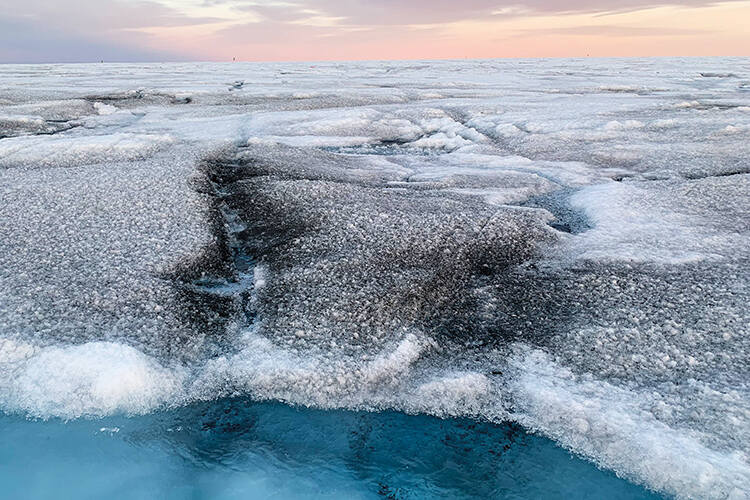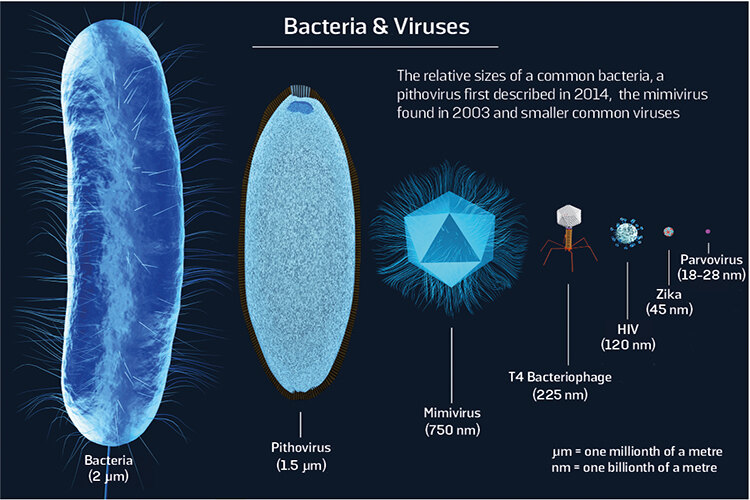
Recently discovered giant viruses could be the solution to slowing the spread of the algae that are warming up the world’s ice cover
By
In 2003, scientists made a big discovery: a virus so large it could be seen with a standard microscope. Viruses are normally considered to be the tiniest pathogens and rarely exceed 150 nanometres (one nanometre is one-billionth of a metre) in diameter. But the mimivirus, which was first identified in a power-plant cooling tower in Bradford, UK, measured a giant 750 nanometres. Other giant viruses, once considered rare, have since been found in soils, rivers and especially in marine environments – where they are known to infect green algae – around the world.
Laura Perini, an environmental microbiologist from Aarhus University in Denmark, says that she had been studying the algae that grow on Greenland when she first started reading about giant viruses. ‘I just got excited and said, “We should be looking for them here, too.”’ Perini’s hunch proved to be right; she and her colleagues discovered evidence of giant viruses on the ice sheet – the first time they had been found living on the surface of snow and ice.
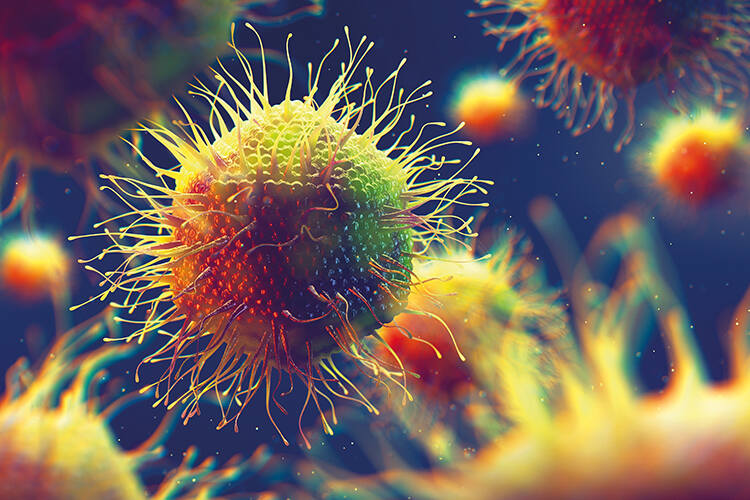
In aquatic ecosystems, viruses are known to be regulators of their algal host populations. In other words, explains Perini, they’re herbivores. If the same proves to be true of these newly identified giant viruses, their discovery might offer us a useful new way to reduce the rate at which Greenland’s snow and ice are melting.
During spring in the Arctic, the days lengthen and the sun rises higher in the sky, bringing life back to the region. This includes algae, which begin to bloom across the ice. Perini explains that the algae that grow on Arctic ice and snow are similar to the kind you might expect to find growing on your garden pond. ‘What’s different is that these algae are growing in environments with really high levels of UV irradiation,’ she says, ‘so they need to shade themselves to survive.’ As such, snow and glacial algae have adapted by accumulating pigments that, from above, give the white landscape a red, pink or purplish-grey appearance, depending on the species of algae.
Fresh white snow is the most naturally reflective surface on Earth but, when algal blooms take hold, they darken the snow, which then absorbs more heat and melts more quickly. This can create a feedback loop, says Perini. As temperatures rise and more snow and ice melts, the algae – which need nutrients, light and liquid water – flourish and expand their reach. All pigmented algae are causing a problem, she adds, but the darker the colour, the greater the impact.
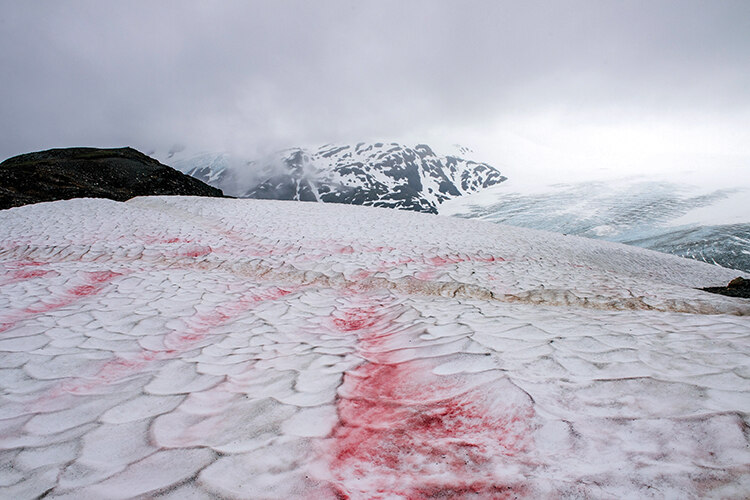
After speculating on the type of algal hosts that might be preferred by giant viruses, the researchers took samples from dark ice, red snow, green snow, ice cores and melting holes (cryoconite), which they analysed for specific marker genes that would suggest the presence of living giant viruses. These viruses, despite their size, aren’t visible to the naked eye with a microscope. However, unlike normal viruses, they contain DNA that can be extracted from the samples taken by the team. ‘In both the dark ice and red snow we found signatures of active giant viruses,’ says Perini.
To confirm that the DNA didn’t come from long-dead microorganisms, the team also extracted all of the messenger RNA (mRNA) from the sample. They found the same markers in the sequenced mRNA as the sequenced DNA, indicating that the viruses are living and active on the ice. ‘You know, a few years ago everyone thought this part of the world was barren and devoid of life,’ Perini adds. ‘But today, we know that several microorganisms live there – including the giant viruses.’
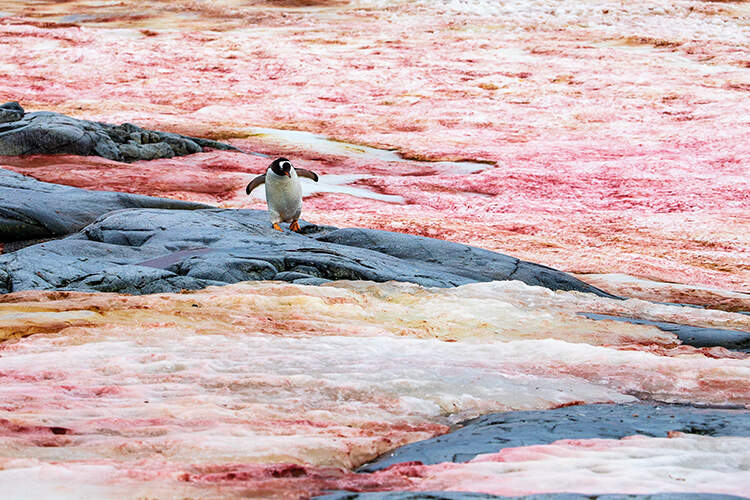
Because giant viruses are a relatively new discovery, and this is the first time they’ve been found on the surface ice and snow algae, Perini points out that their role isn’t entirely known. However, she and her colleagues suspect that the viruses are feeding on the red snow algae and, if that proves to be the case, it’s possible that they could be used to control the growth of the algae and the rate of snow melt.
‘There’s a whole ecosystem surrounding the algae,’ says Perini. ‘Besides bacteria, filamentous fungi and yeasts, there are protists eating the algae, different species of fungi parasitising them, and the giant viruses that we found infecting them.’ In order to understand the biological controls acting on the algal blooms, all of these groups will need further study. ‘But it would make sense that if the viruses infect algae, then they would reduce their presence on the ice sheet surface,’ she says. With Greenland’s ice sheet now losing an average of 30 million tonnes of ice an hour due to warming temperatures, Perini hopes to have some answers to these important questions soon.
